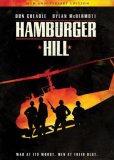| Reviews & Columns |
|
Reviews DVD TV on DVD Blu-ray 4K UHD International DVDs In Theaters Reviews by Studio Video Games Features Collector Series DVDs Easter Egg Database Interviews DVD Talk Radio Feature Articles Columns Anime Talk DVD Savant Horror DVDs The M.O.D. Squad Art House HD Talk Silent DVD
|
DVD Talk Forum |
|
|
| Resources |
|
DVD Price Search Customer Service #'s RCE Info Links |
|
Columns
|
|
|
Hamburger Hill (20th Anniversary Edition)
- Jim Carabatsos (writer/producer)
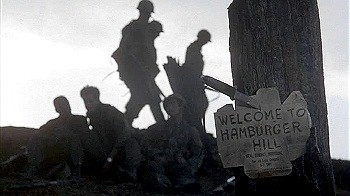
The Movie
When it was released in 1987, Hamburger Hill faced a fitting uphill battle. While nearly a decade had passed since films like The Deer Hunter, Coming Home and Apocalypse Now helped define the cinema's Vietnam War experience, Hill was released five months after Platoon took home four Oscars, and just two months after Stanley Kubrick's Full Metal Jacket jolted moviegoers. Throw in additional efforts like Gardens of Stone and The Hanoi Hilton--both released earlier in 1987--and Oliver Stone's heavily lauded Born on the Fourth of July in 1989, and it's easy to see how Hill got lost in the film history shuffle.
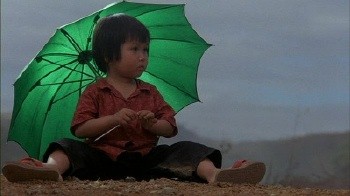
But Hamburger Hill is unlike any of those films: It's much kinder and gentler with its agenda, yet just as brutal with its depiction of soldier life. It tells the story of the Bravo Company, one of the troops of the 101st Airborne Division that marched up Hill 937 (named for its elevation). The mound earned its famous nickname because of its reputation for chewing up soldiers like ground beef, thanks to hellish conditions and strong defense by the North Vietnamese army in the Ashau Valley. It's a real-life struggle that encompassed 11 bloody battles in 10 days during May of 1969, and the screenplay comes from a man who lived through it: Jim Carabatsos, who also produced the film. Hill also features a sort-of sophomore class of the Brat Pack (the Viet Pack?), headlined by the feature film debuts of eventual television stars Dylan McDermott and Courtney B. Vance, plus the first notable role for Steven Weber. There's also a small role for a young actor by the name of Don Cheadle (but don't be fooled by his new top billing on the box cover--Cheadle has very few lines here).
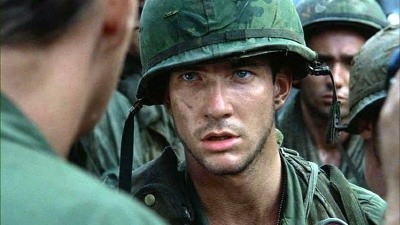
Led by Sergeants Frantz (McDermott) and Worcester (Weber), the company has to adjust to a new Lieutenant (Tegan West) and induct a class of five FNGs (Fuckin' New Guys) as the 14 men prepare to enter the Valley on their seemingly impossible mission. "Forget about the Viet Cong," warns Frentz. "What you will encounter out there is hardcore NVA--North Vietnamese. Motivated, highly trained and well equipped." The sergeant makes it a personal mission to keep his men alive ("People do not die on me in combat!"), but he begins to crack as the mission escalates.
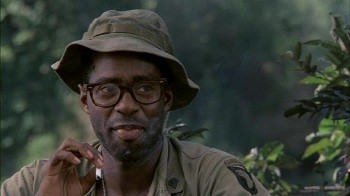 The soldiers are aided by medic Doc Johnson (Vance), who offers wise words as he teaches them about proper hygiene: "If you want to walk out of this fucking place, you'll listen to people who know. You be an individual and I'll be tossing your ugly, toothless face straight on its way to a long box with metal handles." One of four black soldiers in the squad, Doc bonds with Mac (Don James), Motown (Michael Boatman) and newbie Washburn (Cheadle), as the script addresses the racial divide that spilled over from the climate in America--but seemed to disappear as the soldiers grew closer. More tension arises when the men get a taste of the atmosphere back home through brief contact from the outside world--whether from a nosy news crew, a Dear John letter citing how immoral it is to support a soldier, or an emotional message from another girlfriend: "I just don't think it's fair that everybody is back here acting like nothing is going on...their lives are the same. It's just not fair, and I don't believe what they say about you. I don't care, because I love all of you." That harsh reality is further addressed in a stirring scene with Worcester relating the bitter homecoming of a fellow soldier: "They love everybody but you."
The soldiers are aided by medic Doc Johnson (Vance), who offers wise words as he teaches them about proper hygiene: "If you want to walk out of this fucking place, you'll listen to people who know. You be an individual and I'll be tossing your ugly, toothless face straight on its way to a long box with metal handles." One of four black soldiers in the squad, Doc bonds with Mac (Don James), Motown (Michael Boatman) and newbie Washburn (Cheadle), as the script addresses the racial divide that spilled over from the climate in America--but seemed to disappear as the soldiers grew closer. More tension arises when the men get a taste of the atmosphere back home through brief contact from the outside world--whether from a nosy news crew, a Dear John letter citing how immoral it is to support a soldier, or an emotional message from another girlfriend: "I just don't think it's fair that everybody is back here acting like nothing is going on...their lives are the same. It's just not fair, and I don't believe what they say about you. I don't care, because I love all of you." That harsh reality is further addressed in a stirring scene with Worcester relating the bitter homecoming of a fellow soldier: "They love everybody but you."
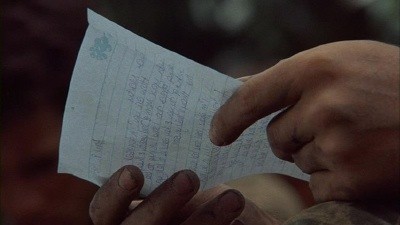
Those scenes are just as powerful as the battle sequences, and director John Irvin goes to great lengths to stress the company's camaraderie. The film refreshingly eschews politics, refusing to preach any sides as it just tries to convey what it was like for the soldiers in this hellish experience. While Frentz may chide draft dodgers ("All I want from anybody is to get their ass in the grass with the rest of us. You don't have to like it, but you have to show up."), others voice their respect.
The film is equally moving on the warpath, where the body count rises as the soldiers advance up the hill. Irvin isn't afraid to show the graphic nature of battle, and the film can be unforgiving in how it randomly strikes any character at any time. No one here is safe, and the final battle is a horrific, unforgettable march that is filmed with beautiful precision.
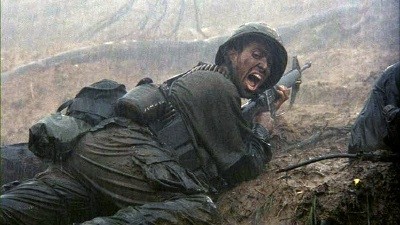
A lot of the images are rendered with an artistic touch, vivid snapshots that leap off the screen. You can see the storyboards come to life, and I almost sensed a comic book-like flow to the visuals--and I mean that as a compliment. The action was gritty and realistic in its depiction of war, yet the scenes were beautifully filmed. Many shots could be paused, framed and put on display in an art gallery. They capture that horrible mix of tragedy and triumph, a testament to the heroism of the soldiers that lived and died in the experience.
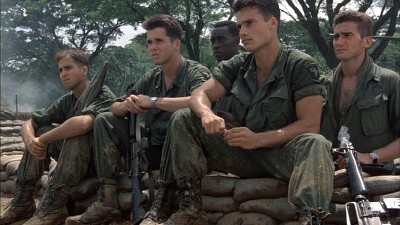
One of the few gripes I had with the film was the score from Philip Glass during the final battle--it was more distracting for me. It sounded unnecessarily nostalgic, more at home in an old time World War II movie than here, where it felt counteractive to the ultimately tragic story. I also felt that some characters weren't as developed as they could have been. We're given some personality traits with a few soldiers, but many of these characters are interchangeable.
I'm thankful that no silly sub-plots are tacked on to create unnecessary tension and detract from the film's purpose, but I still would have enjoyed an extra scene here and there to help flesh out much of the cast, and give us a better sense of who they were. Privates Languilli (Anthony Barrile), Beletsky (Tim Quill) and Bienstock (Tommy Swerdlow) get a few strong scenes, but we know virtually nothing about Washburn (Cheadle), Murphy (Michael Dolan), Galvan (Michael A. Nickles), Duffy (Harry O'Reilly) and Gaigin (Daniel O'Shea).
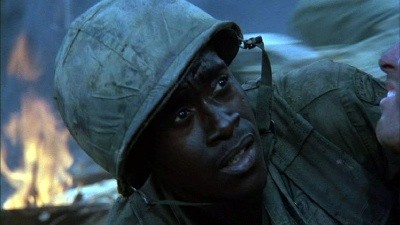
The film's style may not suit everyone. It may be too aware of itself for some people--there's a theater-like vibe to much of the proceedings. In the audio commentary, Carabatsos notes that the non-combat scenes were blocked and staged as if it was a play, a sentiment shared by one of the performers. And the acting often feels like it's more suited to the stage--there's a heightened sense of awareness with some of the dialogue, exaggerated projection at times (Vance may be the most obvious with this) and "important moments" that come across as isolated monologues. But it's a damn good play, so if you're willing to accept Irvin's style, something memorable awaits.
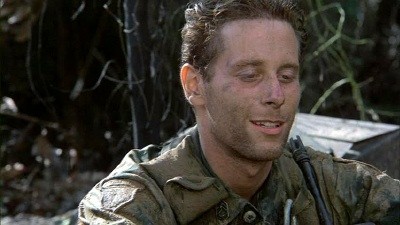
The DVD
Video:
Originally released in 1999 in a mostly barebones package, this new 20th Anniversary Edition claims a newly remastered widescreen version. I don't have the old release to compare; that one apparently had an anamorphic transfer as well. Here you get a 1.85:1 picture enhanced for widescreen TVs, and it's a strong effort for the most part. As he addresses in the extras, director John Irvin used an intentional muted color scheme: "I worked with four colors: There's the brown of the mud and the khaki, the green, the brown of the blood, flesh colors, and that's about it." He used a process to de-saturate the skin tones and the greens, and made the blacks "really black." That is readily apparent, with the film looking very dull at times, but not in a bad way, especially because the explosion effects really pop out on the screen. Occasional grain and a few film specks show up at times, but there are no major issues.
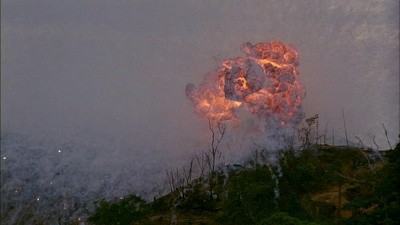
Audio:
Like the 1999 release, this one has a 5.1 audio track (again, without the original release, I can't make any comparisons). This is a loud film, and while there are some solid rear effects, I felt it was heavily geared toward the front channels. I also found the overall balance to be a tad off at times--it can be hard to understand what the characters say in a few sequences, as they fight for attention with background noises like explosions or music. Sometimes that's intentional, but it some non-action scenes it is slightly annoying. Still, this is a minor issue and the overall impression is solid. English and Spanish subtitles are also provided.
Extras:
The biggest draw to this anniversary edition is the bonus features; all we got in 1999 was the theatrical trailer, which is not on this release. Leading the way is a full-length audio commentary with writer/producer Jim Carabatsos and three of the actors: Anthony Barrile (Languilli), Harry O'Reilly (Duffy) and Daniel O'Shea (Gaigin). None of the actors had big parts in the film, but they still manage to share a lot of interesting experiences. While it initially sounds like the tracks were recorded separately, there is eventual interaction among the four men.
This is a pretty busy chat, and a decent portion of it isn't geared toward specific scenes. Carabatsos gets the most time, and talks a lot about getting the script off the ground, which proved challenging. "The attitude in Hollywood toward Vietnam I felt reflected the attitude in America, in that Vietnam and Vietnam veterans were the bogeymen of our country." He talks about trying to break away from the misconception that all veterans were "drug addicts and engaged in fratricide...I don't think anybody can say this [movie] was pro-war, anti-war...it was just 'there it is.' This is what war was like, and making that type of movie was very difficult." He notes that many other Vietnam War films were more metaphorical, "almost operatic in nature than what we were trying to accomplish."
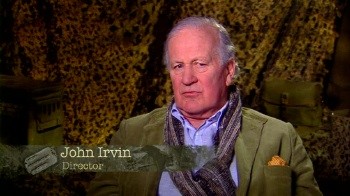 Carabatsos has a mostly monotone delivery, but his musings are interesting. He states he viewed the profanity in the film "as a form of poetry...I would never watch this on [broadcast] television. It just doesn't make sense." He explains how the handsome, heroic looks of actor Michael Nickles played into the script, which he notes was a "living script" that frequently changed during filming. Bits of passion creep out of Carabatsos, like when he addresses the race issues, or the reaction many veterans received upon returning home: "It wasn't so much opposition to the war I think that bothered the guys coming home, it was opposition to you. And there was an enormous amount of animosity towards veterans. I just thought it was all this self-indulgent animosity." The performers chime in with some fun stories from the shoot (and their distaste for the smell of burning tires), the brotherhood among the actors, the tough conditions during the shoot, injecting their own personalities into their characters, and what the picture meant to them. It's an interesting chat, although I wish Irvin participated.
Carabatsos has a mostly monotone delivery, but his musings are interesting. He states he viewed the profanity in the film "as a form of poetry...I would never watch this on [broadcast] television. It just doesn't make sense." He explains how the handsome, heroic looks of actor Michael Nickles played into the script, which he notes was a "living script" that frequently changed during filming. Bits of passion creep out of Carabatsos, like when he addresses the race issues, or the reaction many veterans received upon returning home: "It wasn't so much opposition to the war I think that bothered the guys coming home, it was opposition to you. And there was an enormous amount of animosity towards veterans. I just thought it was all this self-indulgent animosity." The performers chime in with some fun stories from the shoot (and their distaste for the smell of burning tires), the brotherhood among the actors, the tough conditions during the shoot, injecting their own personalities into their characters, and what the picture meant to them. It's an interesting chat, although I wish Irvin participated.
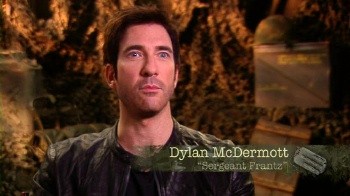 Up next is "Hamburger Hill: The Appearance of Reality" (15:57), a collection of interviews with director Irvin, producer Marcia Nasatir and actors McDermott, Vance, Weber, Quill, Swerdlow, Nickles, West and Kieu Chinh (who played Mama San, and also served as a Vietnam advisor). Among the topics discussed are the harsh climate in the Philippines, where this movie was shot shortly after the 1986 coup that placed Corazón Aquino in power after Ferdinand Marcos was displaced. They also talk about the tragic death of one of the crew early during the shoot, a Best Boy who was electrocuted.
Up next is "Hamburger Hill: The Appearance of Reality" (15:57), a collection of interviews with director Irvin, producer Marcia Nasatir and actors McDermott, Vance, Weber, Quill, Swerdlow, Nickles, West and Kieu Chinh (who played Mama San, and also served as a Vietnam advisor). Among the topics discussed are the harsh climate in the Philippines, where this movie was shot shortly after the 1986 coup that placed Corazón Aquino in power after Ferdinand Marcos was displaced. They also talk about the tragic death of one of the crew early during the shoot, a Best Boy who was electrocuted.
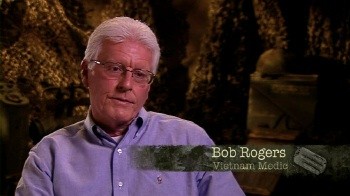 You also get "Medics in Vietnam" (6:02), a continuation of interviews that focuses on the role of the war medic. It features Vance, Col. Robert Tomlinson, USAF (Ret.); Arthur Wiknik, Jr., 101st Airborne Division and author of Nam Sense; and Vietnam veteran Bob Rogers, who provides the most compelling thoughts when reflecting on his medic days: "When you see a person die, it really does change your life. It's a footprint in your mind that you'll never forget," he says. "You never allow yourself to get close. You become buddies, but you never become friends. Friends get killed, buddies get whacked." Both of these behind-the-scenes features are good, but I feel like they just scratch the surface. Considering all of the main players have been assembled, I feel a real opportunity was missed, a wealth of compelling stories remaining hidden. It also would have been nice to see some in-depth documentary on the real battle. What's here is certainly better than nothing, but leaves me a little frustrated given the fascinating nature of the subject. Also included is a text Vietnam War Timeline, which has 16 short entries covering events from 13 years (ranging from 1867 to 1975). Rounding out the extras are four trailers for different releases.
You also get "Medics in Vietnam" (6:02), a continuation of interviews that focuses on the role of the war medic. It features Vance, Col. Robert Tomlinson, USAF (Ret.); Arthur Wiknik, Jr., 101st Airborne Division and author of Nam Sense; and Vietnam veteran Bob Rogers, who provides the most compelling thoughts when reflecting on his medic days: "When you see a person die, it really does change your life. It's a footprint in your mind that you'll never forget," he says. "You never allow yourself to get close. You become buddies, but you never become friends. Friends get killed, buddies get whacked." Both of these behind-the-scenes features are good, but I feel like they just scratch the surface. Considering all of the main players have been assembled, I feel a real opportunity was missed, a wealth of compelling stories remaining hidden. It also would have been nice to see some in-depth documentary on the real battle. What's here is certainly better than nothing, but leaves me a little frustrated given the fascinating nature of the subject. Also included is a text Vietnam War Timeline, which has 16 short entries covering events from 13 years (ranging from 1867 to 1975). Rounding out the extras are four trailers for different releases.
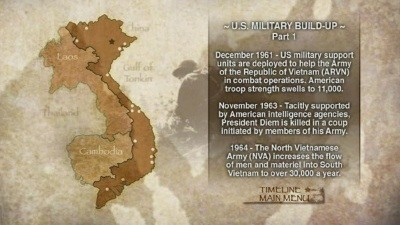
Final Thoughts:
Seemingly forgotten amid the wave of films that came before and after, Hamburger Hill stands out for its simple mission: to show what it was like for the soldiers during one of the most brutal battles in the Vietnam War. There's no harsh agenda here, and the result is a poetic testament to the heroes of Hill 937. The acting and filming style--more reminiscent of a play in some spots--may not work for everyone, but this film stands out for its simplicity, and has a final charge that is haunting and unforgettable. Recommended, although I wish the new extras delved deeper into history and the film.
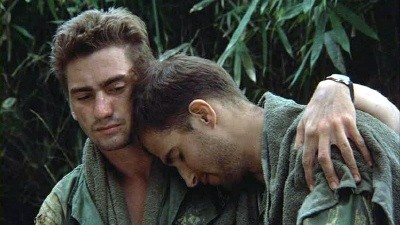
|
| Popular Reviews |
| Sponsored Links |
|
|
| Sponsored Links |
|
|
| Release List | Reviews | Shop | Newsletter | Forum | DVD Giveaways | Blu-Ray | Advertise |
|
Copyright 2024 DVDTalk.com All Rights Reserved. Legal Info, Privacy Policy, Terms of Use,
Manage Preferences,
Your Privacy Choices | |||||||









